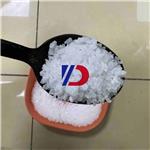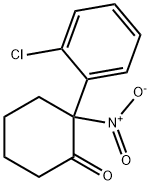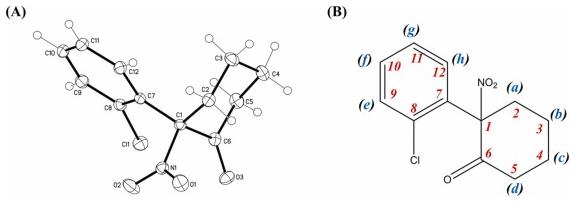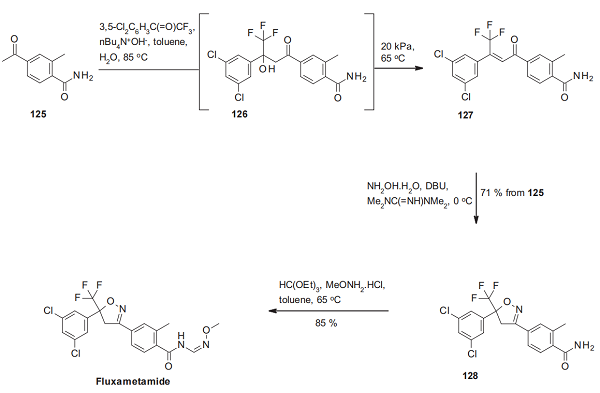2-(2-Chlorophenyl)-2-nitrocyclohexanone: Overview, Side Effects and Dosage
General Description
2-(2-Chlorophenyl)-2-nitrocyclohexanone cream is a topical antifungal medication used to treat various skin infections, primarily targeting superficial fungal infections of the skin. While it is generally safe and effective, prolonged usage may increase the risk of side effects, which include skin irritation, burning sensation, and redness. It is recommended to use the cream under medical guidance, following correct application methods and treatment durations to minimize the occurrence of adverse effects. When using 2-(2-Chlorophenyl)-2-nitrocyclohexanone cream, it is important to avoid contact with eyes and mucous membranes, not apply to broken skin, and avoid using over large areas of the body. Overall, 2-(2-Chlorophenyl)-2-nitrocyclohexanone cream is a helpful medication in treating skin conditions caused by fungal infections.

Figure 1. 2-(2-Chlorophenyl)-2-nitrocyclohexanone
Overview
2-(2-Chlorophenyl)-2-nitrocyclohexanone was first synthesized in 1976 as the first orally active azole antifungal medication. Initially, it was available in the form of tablets or capsules for oral administration to combat fungal infections. However, the reason why 2-(2-Chlorophenyl)-2-nitrocyclohexanone tablets or capsules are no longer available on the market today is due to regulatory actions taken in recent years. In 2013, the Committee for Medicinal Products for Human Use of the European Medicines Agency banned the oral use of 2-(2-Chlorophenyl)-2-nitrocyclohexanone citing its severe hepatotoxicity. Subsequently, in 2015, the China Food and Drug Administration issued a notice to cease production, prohibit use, and recall orally administered ketoconazole formulations. Nevertheless, the hepatotoxicity of ketoconazole manifests upon internal ingestion into the bloodstream. This has led to the continued availability of ketoconazole in the form of creams and shampoos, such as the commonly used ketoconazole shampoo and cream. Unlike the oral form, the topical application of ketoconazole minimizes the risk of liver damage. 2-(2-Chlorophenyl)-2-nitrocyclohexanone cream is suitable for treating various skin infections, primarily targeting commonly encountered fungal infections. As it is applied externally, its therapeutic range focuses on superficial fungal infections of the skin, including conditions such as ringworm, athlete's foot, jock itch, pityriasis versicolor, and cutaneous candidiasis. When used as directed after diagnosing these conditions, the application of ketoconazole cream yields excellent results, earning it the moniker "nemesis of skin diseases" and leading to widespread clinical use. However, due to its classification as a non-prescription drug, 2-(2-Chlorophenyl)-2-nitrocyclohexanone cream must be purchased and used under the guidance of a licensed pharmacist in a pharmacy setting. 1
Side effects
When using 2-(2-Chlorophenyl)-2-nitrocyclohexanone cream for an extended period of time, there can be certain side effects to be aware of. Common side effects may include skin irritation, burning sensation, itching, redness, dryness, and mild peeling. These side effects are usually temporary and tend to diminish or disappear as you stop using the cream. However, in rare cases, more severe side effects may occur. These can include serious allergic reactions such as rash, swelling, difficulty breathing, as well as uncommon but severe skin reactions like severe itching, blistering, and ulceration. If any severe side effects manifest, it is advisable to discontinue the use of 2-(2-Chlorophenyl)-2-nitrocyclohexanone cream immediately and seek medical advice. In summary, while 2-(2-Chlorophenyl)-2-nitrocyclohexanone cream is generally safe and effective for treating conditions like athlete's foot and fungal infections when used appropriately, prolonged usage may increase the risk of side effects. It is recommended to use the cream under medical guidance, following correct application methods and treatment durations to minimize the occurrence of adverse effects. 2
Dosage
When using 2-(2-Chlorophenyl)-2-nitrocyclohexanone cream, it is important to follow certain guidelines to ensure its proper use and effectiveness in treating fungal infections. First, avoid contact with the eyes and other mucous membranes such as the mouth and nose. Additionally, it is recommended to avoid applying the cream on open wounds or cuts on the scalp to avoid excessive absorption into the bloodstream. Second, if there is a burning sensation or swelling at the application site, it is important to discontinue use and wash the affected area thoroughly. It is also recommended to seek advice from a doctor or pharmacist if necessary. Third, 2-(2-Chlorophenyl)-2-nitrocyclohexanone cream should not be applied to broken skin to prevent excessive absorption into the bloodstream. It is also not recommended to use it over large areas of the body. Fourth, patients with groin fungal infections should avoid tight underwear or synthetic undergarments. The use of prickly heat powder may also be considered when using the cream externally. Lastly, for patients with athlete's foot, it is important to thoroughly dry the skin, especially between the toes, after bathing. Following these guidelines can help ensure the safe and effective use of 2-(2-Chlorophenyl)-2-nitrocyclohexanone cream in treating fungal infections. 2
Reference
1. Phillips RM, Rosen T. Topical Antifungal Agents. 2013. In Wolverton SE. Comprehensive Dermatologic Therapy (3rd ed.). Philadelphia: Saunders. 460–472.
2. Cerner M. Ketoconazole topical. Drugs. Brand name: Nizoral, 2023.
Related articles And Qustion
See also

US $100.00-80.00/KG2025-03-21
- CAS:
- 2079878-75-2
- Min. Order:
- 1KG
- Purity:
- 99%
- Supply Ability:
- 10000000

US $0.00/kg2025-03-18
- CAS:
- 2079878-75-2
- Min. Order:
- 1kg
- Purity:
- 0.99
- Supply Ability:
- 10T



